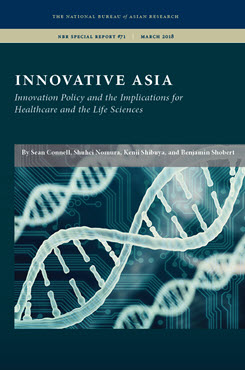The Unique Challenges for Life Science Innovation in Asia
This essay examines several short-term challenges to life science innovation in Asia and offers recommendations for balancing domestic political needs and innovation in a way that maximizes access to healthcare while controlling expenditures.
EXECUTIVE SUMMARY
This essay examines several short-term challenges to life science innovation in Asia and offers recommendations for balancing domestic political needs and innovation in a way that maximizes access to healthcare while controlling expenditures.
MAIN ARGUMENT
In early stages of economic development, a country’s healthcare and life science industry typically only focuses on addressing basic public health concerns. As nations achieve higher levels of development, the focus shifts toward providing best-in-class therapeutics and healthcare innovations while leveraging these advancements to promote economic growth, as has been the case for countries like Japan and South Korea. When handled properly, the healthcare delivery, life science, medical device, and healthcare information technology industries have the potential to both foster economic growth and address a country’s unique public health challenges. However, when policies for these industries are improperly managed, countries can suffer from a lack of access to the latest therapeutic drugs and healthcare delivery platforms and impede the growth of and investment in viable ecosystems for innovation. These considerations call for governments to carefully craft policies that balance the need for promoting innovative solutions to public health challenges while also controlling healthcare expenditures.
POLICY IMPLICATIONS
- National governments should ensure that domestic healthcare and life science industry standards are harmonized with global regulatory standards. Doing so increases market access and product competitiveness, which accelerates innovation and lowers costs. It can also reduce consumer risk by ensuring that local manufacturers are held to the latest international safety standards.
- Domestic regulatory and pricing policies need to be transparent and predictable because unanticipated changes may disincentivize industry from pursuing necessary future innovations.
- In order to achieve advancements in the life science sector, governments need to foster ecosystems that incentivize innovation by encouraging collaboration between academic institutions, government-led incubator hubs, private venture-capital firms, and commercial enterprises.
- As the fields of precision medicine and big data mature, governments will need to ensure that policies enable researchers across the world to access, learn from, and leverage various types of personal health information.


